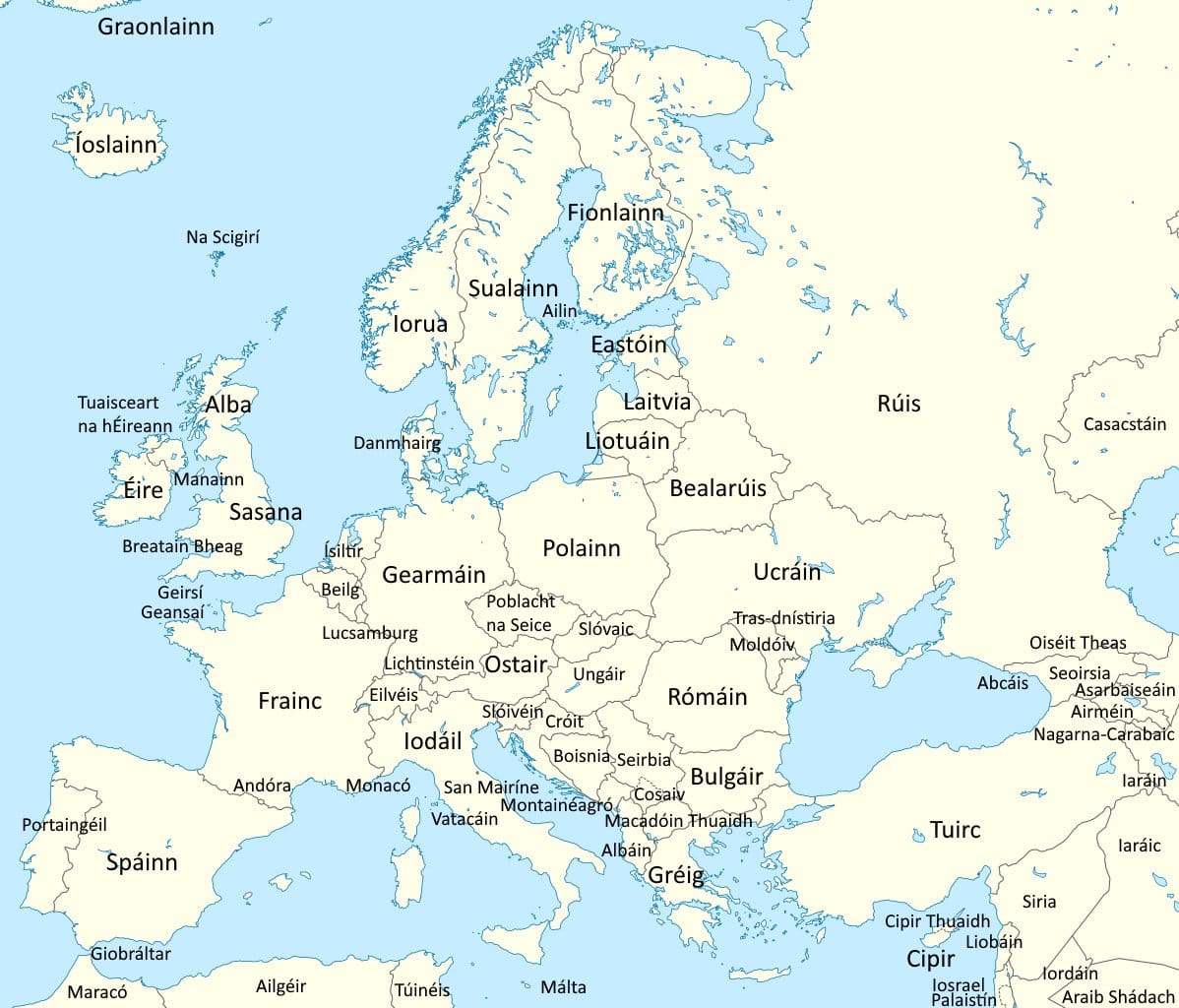Map found on Reddit
When you look at a map of Europe in Irish, something magical happens. The familiar names you’ve known since primary school transform into something both strange and beautiful.
France becomes Franc (okay, that one’s easy), but then you encounter gems like An Ghearmáin for Germany or An Bheilg for Belgium, and you realize you’re seeing Europe through an entirely different cultural lens.
The Irish language, one of Europe’s oldest living tongues, has its own unique way of naming our neighbors. Some names are straightforward phonetic adaptations, while others reveal fascinating historical connections and linguistic quirks that tell stories about trade, invasion, and centuries of cultural exchange.
The Familiar Made Foreign
Start with the easy ones. Spáinn for Spain and Portaingéil for Portugal are recognizable enough. But then things get interesting.
England becomes Sasana, derived from “Saxon,” a reminder of who the Irish remember as their historical neighbors. Scotland is Alba, the ancient Celtic name that predates modern English entirely.
Look further east and you’ll find Poblacht na Seice (Czech Republic), An Pholainn (Poland), and An Ungáir (Hungary). These aren’t just translations but adaptations that show how Irish speakers heard and interpreted foreign place names through their own phonological system.
Northern Surprises
The Nordic countries offer particularly interesting examples. Fionlainn (Finland) and Danmhairg (Denmark) maintain recognizable roots, while Iorua (Norway) and Sualáinn (Sweden) sound almost like passwords to a secret European club.
Iceland, or Íslainn, keeps its icy essence intact.
Southern Charm
The Mediterranean gets the Irish treatment, too. Iodáil (Italy) and Gréig (Greece) have a musical quality that somehow suits these sun-drenched destinations.
An Phortaingéil (Portugal) adds that distinctive “P” sound that Irish grammar loves to insert, while Málta remains remarkably unchanged.
Eastern Adventures
Perhaps most intriguing are the names for Eastern European nations. An Rúis (Russia), Bealarúis (Belarus), and An Úcráin (Ukraine) demonstrate how Irish handles Slavic sounds.
The Caucasus region appears as Seoirsia (Georgia) and Airméin (Armenia), while Tuirc (Turkey) sits at the crossroads between Europe and Asia in both geography and linguistics.
Why This Matters
These names aren’t just academic curiosities. They represent a living language’s attempt to make sense of a complex continent. Every name is a small act of cultural translation, a bridge between Irish speakers and the wider European community.
When you know that Germans call their country Deutschland but the Irish say An Ghearmáin, you start to appreciate that place names aren’t fixed points but fluid concepts shaped by who’s doing the naming. This map reminds us that Europe isn’t just a geographic reality but a cultural one, seen differently from every vantage point.
Next time you plan a European adventure, try using the Irish names. You might just see these destinations in a whole new light.
Help us out by sharing this map:
